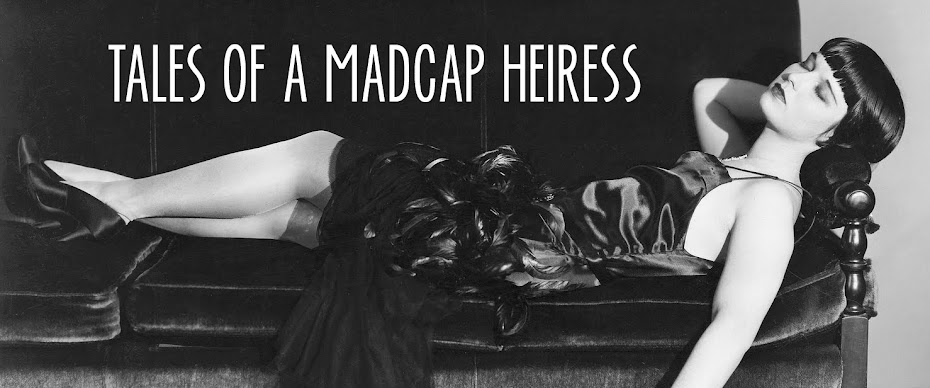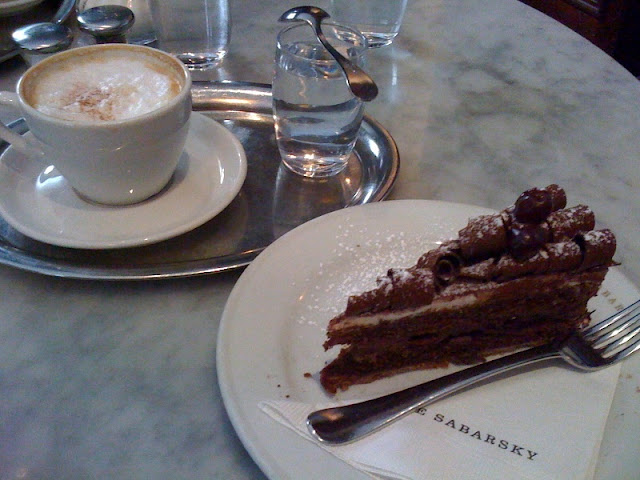Happy Birthday, Mrs.
Parker. The original Mrs. Parker that is.
In A Midsummer
Night’s Dream, it is said of Hermia that “though she be but little she is
fierce.” Shakespeare could have been describing Dorothy Parker, one of America’s
great wits and a New York City literary icon.
On 22 August 1893
Dorothy Rothschild was born in West End, New Jersey (she would always regret
that her parents couldn’t make it back to New York in time for her birth). An
unhappy childhood (she lost her mother at four and didn't get along with her stepmother) didn’t stop the precocious
little girl from developing her unique take on language and the world. Expelled
from Catholic school for describing the Immaculate Conception as “spontaneous
combustion,” her formal education ended at 14. A voracious reader (her
favourite character was Becky Sharp in Vanity Fair), she wanted to be a writer and worked on
her verse, getting a poem “Any Porch” published in Vanity Fair the magazine in 1915. A job
at Vogue soon followed.
A few years later she married the first of her two husbands. While the marriage didn’t
work out, Edwin Pond Parker II gave Dorothy Rothschild one of the most
important gifts she would ever receive, a new name, and for the rest of her life she would be known as Dorothy Parker.
She would go on to
work for Vanity Fair, eventually becoming its theatre critic. (On Katherine
Hepburn: “[she] delivered a
striking performance that ran the gamut of emotions, from A to B.”) There she
became colleagues and good friends with Robert
Benchley and Robert E. Sherwood. When the magazine’s editor, Frank Crowninshield,
famously invited her to brunch at the Plaza only to fire her (one of her reviews had angered Flo
Ziegfeld), Benchley and Sherwood walked out in protest.
"A Vicious Circle" by Natalie Ascencios, a painting of the Algonquin Round Table members, hangs in the hotel today. Mrs. Parker and Mr. Benchley can be seen at the far left.
The three would lunch
regularly at the Algonquin Hotel and as their group grew (members included
Alexander Woollcott, Harold Ross, Edna Ferber, and George S. Kaufman) so did their fame, and they were soon dubbed the Algonquin Round Table. Mrs. Parker’s acerbic comments and witty
bon mots (Asked to use the word horticulture in a sentence: “You can lead a horticulture,
but you can't make her think.”) made their way into
fellow diner Franklin Pierce Adams’ popular newspaper column “The Coning Tower,”
and Mrs. Parker became famous as the woman who said clever things.
This reputation
would come to haunt Mrs. Parker who was no frivolous flapper but an intelligent
woman who wanted to be a good writer. Writing did not come easy to her. "I can't write five words but that I change
seven," she once said. Writer’s block would cripple her for months at a
time and her own insecurity in her writing didn’t help either. “Dear
God, please make me stop writing like a woman.”
But she could write and write well. I dare you to read
one of her short stories like “Big Blonde” or "A Telephone Call" and not feel moved by the plight of the female characters or read one of her poems such as “Inventory”
or “Symptom Recital” and not nod your head in agreement with the truth
of her words.
And it must not be
forgotten than when Harold Ross began a new magazine in 1925 called The New
Yorker, Mrs. Parker was one of its first contributors (Responding to Harold
Ross' question of why she wasn’t in the office: "Someone else was using the pencil."). The
contributions Mrs. Parker made in those early days helped to shape what would
become arguably the most important literary magazine in America.
In addition to
writing poems, short stories, criticism, and plays, Mrs. Parker also wrote
screenplays in Hollywood with husband number 2 and 3, Alan Campbell. Her screen
credits include A Star is Born (1937) (for which she earned an Academy Award
nomination) and Alfred Hitchcock’s Saboteur (1942).
She was also a
political activist. In 1927 she was arrested in Boston for protesting the scheduled execution of Sacco and Vanzetti.
Her support of left-wing causes would eventually get her blacklisted in Hollywood in the 1950s. When
she died on 7 June 1967, she left her estate to Martin Luther King. After his
assassination, the money reverted to the NAACP. Today, her ashes are buried on the
grounds of their Baltimore headquarters.
Yet with all her
fame, Mrs. Parker never seemed to find true happiness. Her marriages were unsuccessful
(she probably received more happiness from her beloved dogs than from any of
the men in her life). She attempted suicide multiple times and had a drinking
problem. And she always had doubts about her writing.
But for me, she is
an inspiration. Her fierce determination to succeed as a writer, her
fearlessness in telling the truth, the fact that she didn’t try and hide her
intelligence, her sentimentality and love of dogs, all of these things, I
believe, are qualities to be admired.
So happy birthday
Mrs. Parker. I shall be toasting your memory today.





























